Hi, I’m Igor Kolar, co-founder of Gamechuck, and the designer behind the Gamechuck Arcade.
I’m an industrial designer by trade. At some point during the making of our first game, All You Can Eat, it occurred to me that making games weren’t hard enough, so I thought we’d venture into hardware territory as well.
Truthfully though, I actually wanted to contribute with something closer to my own, honed skill set, and also give a previous project a better going at.
The pre-history of the Gamechuck Arcade
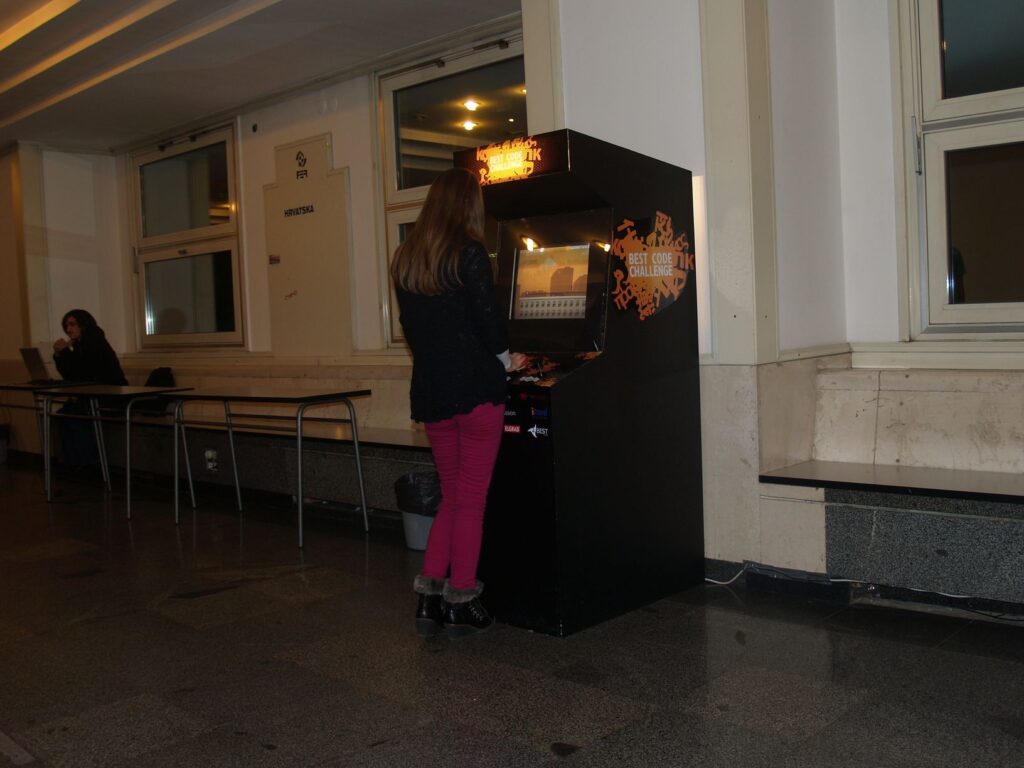
The idea for the Gamechuck Arcade stems back to our days in a pan-European student organisation called BEST. At the time, the local, Zagreb branch of the organisation, was keen on promoting every event we organised, with fliers and posters.
Having done several of these, I was beginning to have a personal problem with the effectiveness of this method. Mainly because every other event grabbing for students’ attention was doing the exact same thing.
It just so happened that the stars aligned for the organisation of a student programming competition, which Alex, the other co-founder of Gamechuck organised, I designed for, and another friend with exceptional programming skills was happily coaxed into creating for.
The majority of the components were donated. Except for a few key elements, like the super-effective-at-grabbing-your-attention-big-red-button™.
Once the ball got rolling, we easily got other volunteers to paint and work on the arcade cabinet that sprung up overnight. During that time, our programmer friend Marko Jančec and I sat about making a one-button, pixel art game to promote the event.
What emerged from the basement at around 2 AM on Monday, was a black cabinet with two 100 Watt bulbs ominously illuminating an entire dark hallway of the faculty. The game was a simple one-button runner, that got played around 10,000 times over the course of the following three weeks.
Doing the pixel art was so much fun, that it very likely cemented the idea for Speed Limit to be done in that style, at some point in the future, and the arcade… well, if we could do something people could enjoy so much in three days, imagine what we could do if we had a month.
The best laid schemes…
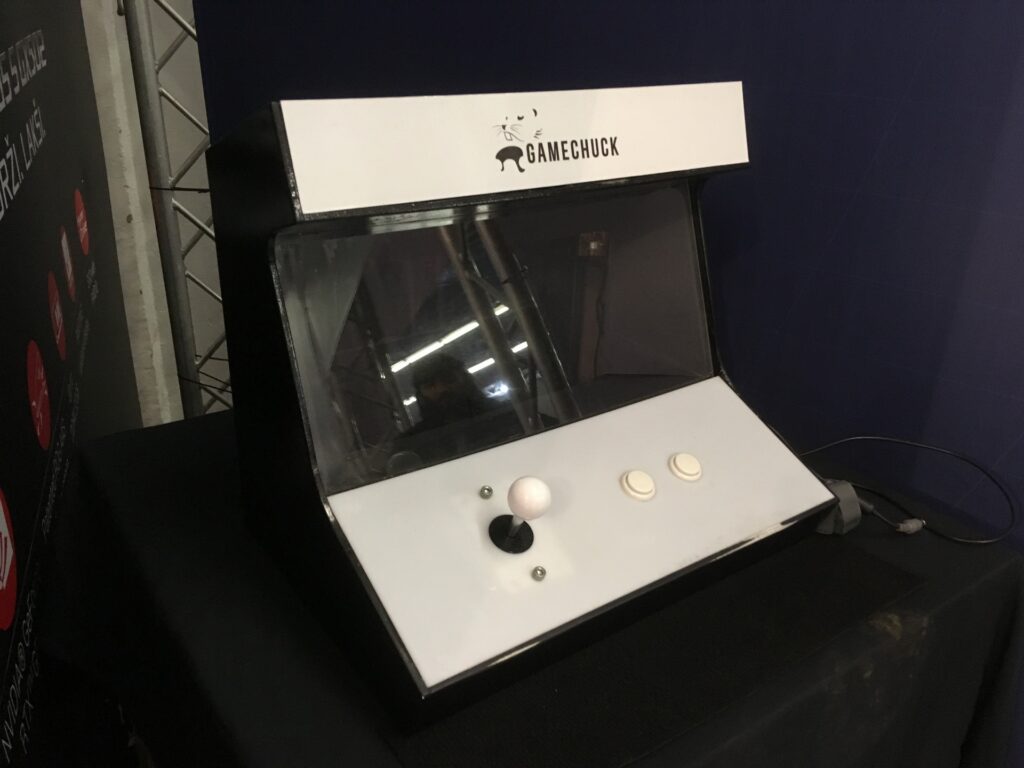
To describe the entire process which leads us to today would be arduous at best, and mind-numbingly boring at worst. Suffice to say, the process was long and iterative, with large pauses in between relatively small improvements.
This was done in one part to enable us to produce the games which are the core of our studio after all, and partly because the development of anything, is costly.
We had the good fortune of this project being recognized several times by the local development agency, which provided us with some initial funding to acquire both the machines to produce the arcades and materials needed to do so.
Either way, three years later, we’re almost ready to call it done.
Old school, new school
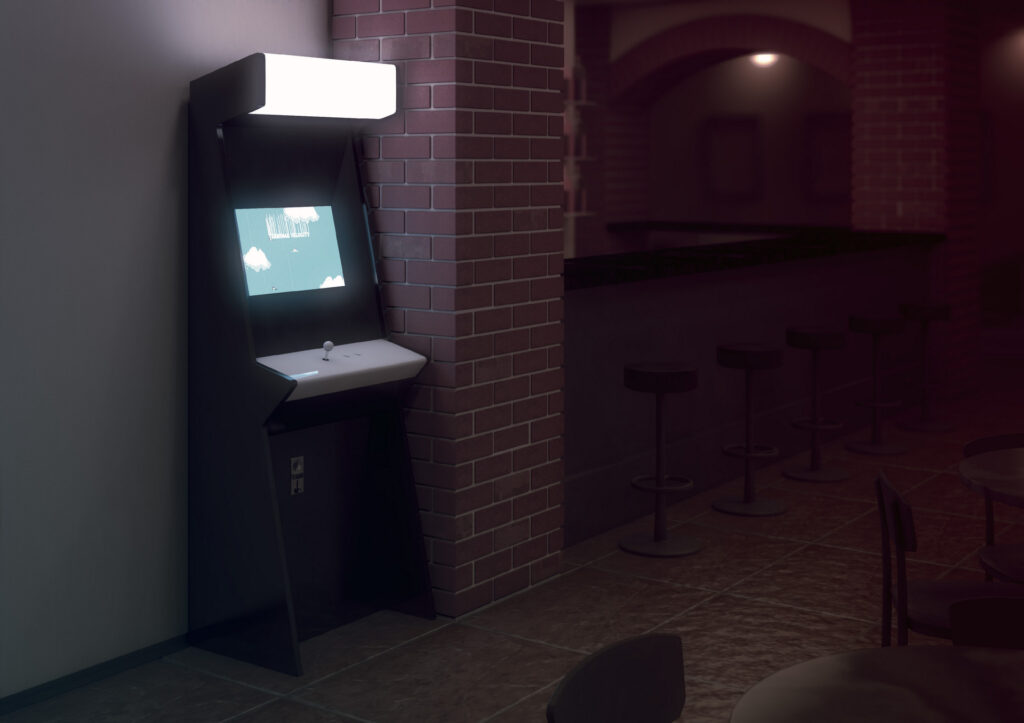
Like most products on the market, the Gamechuck Arcade came about from a simple frustration with what we saw available, and the optimistic thought of “We can do better than this”.
The only arcades I can remember playing (or seeing) as a kid were Virtua Cop and Metal Slug before a high school trip took me to Disneyland Paris where I stumbled (nearly face-first from excitement) into a life-size pod racing cockpit.
The arcades passed into oblivion with the rise of the home consoles, but before they did, the cabinets were the ones that had the more advanced hardware, and as such the more vivid games. Unfortunately, they also had the early pay-to-win mechanics by the sheer nature of their business model.
There are a few places here (Zagreb) that still have (a couple of) arcades, but they’re all either outdated systems, or prohibitively expensive for what they offer, compared to even several generations of home consoles back.
We’ve been seeing arcade bars pop up in other countries lately, which is great, they’re like little temples preserving the old artifacts. There have also been several notable developers who produced games for arcade cabinets, like Locomalito, and most recently (I think) Dodge Roll.
Adding to that, several companies have launched their own new systems, which, while I’d love to play, are in my opinion, either too old school, or not enough new school.
We don’t want to pretend we’ve gone back
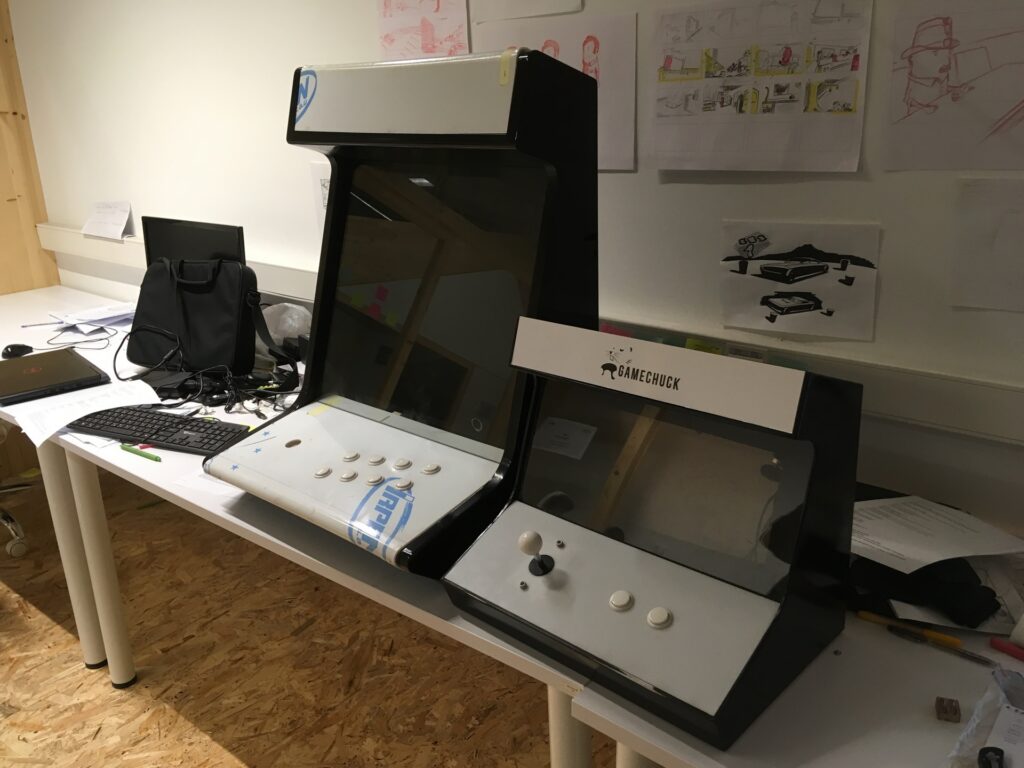
The modern-age old question. Well, the Gamechuck Arcade is our two cents (or a quarter, rather) thrown into that debate.
Like everything else we do in Gamechuck, we try to learn from those who did things before us, and then give it our own fresh spin on it.
I think trying to chase the old physical archetype of the arcade only ensures it will continue to remain ‘retro’ in our minds. I find that somehow ironic, particularly as it happens with all iconic pop culture designs. Be it the arcades, any of the early home consoles, or the Commodore Amiga, those shapes are revered.
I would be remiss if I didn’t mention the brilliant work Love Hultén and 8BitDo arcade have done, their arcades are just pure pieces of (functional) art.
We’re certainly opting for a more utilitarian approach with our cabinet. Yes, you could very easily recognize the Gamechuck Arcade from afar as being just that, an arcade.
However, I do think it’s a lot more honest design if we don’t pretend we need 50cm of depth to fit a modern LED screen though. The sleek, subtle design, is meant to fit just as well in an arcade as it does in a more contemporary environment.
We’d like to think that it could stand side by side to high-end Hi-Fi equipment, and still look like it belonged there.
Many of these design choices are in turn, the causes of the long development time. We wanted all the panels to match seamlessly, which meant working with tighter tolerances than you’d be able to get away with on an archetypical arcade design.
We didn’t want to resort to slapping a sticker on the side and calling it a day, which meant several clear coats and polishing to get the smooth piano finish. And we wanted to be able to do as much as possible in-house, which meant putting together the machines that can produce the components.
From the ground up, up, down, down, left, right…
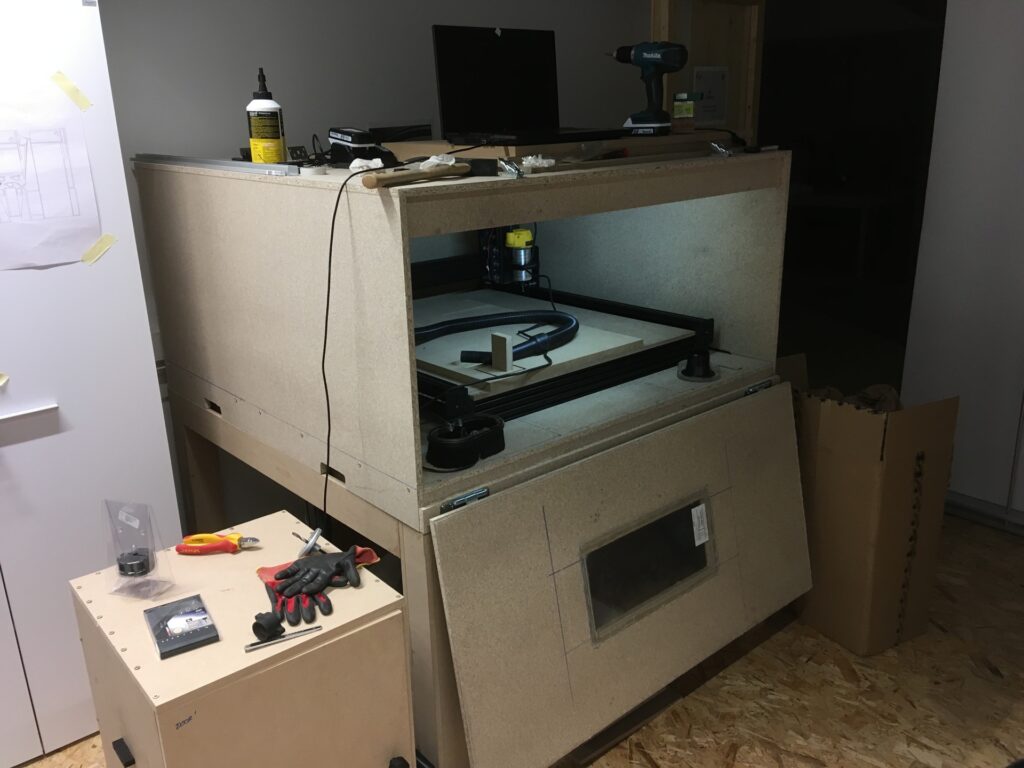
I’m a big believer in driving what you got. I’m also a big believer, however, in a few things having to be done manually as possible. The Ooznest Workbee CNC we got, has been instrumental in cutting out the major pieces of the arcade. After putting it together, we realized we couldn’t just fire it up in our co-working office.
Having no other space to move it to, however, we built a housing for it, from the inside of the office. All of this was practically done by the cover of night, lest our co-working neighbors lead a coup and have us thrown out for the excessive noise that building anything usually entails. As was the first prototype we built entirely ourselves.
Those were some very long, loud nights. It was a great learning process, not to mention the specific kind of satisfaction that anybody who has ‘wrenched’ anything can relate to.
The Prusa MK3 3D printer proved to be an incredible supplementary tool to the big CNC. With it, we were able to very quickly prototype both components which are going into the arcade, but also components for the machines that are making them.
Inside the arcade, we use parts printed in PETG, a very flexible and sturdy plastic, mostly as a mediary between the fibre board and whatever component we’re attaching to it.
I think 3D printing technology has come a long way, and for certain applications (and in low volume production) I think it makes no sense to bother with injection moulding, if printing gives you the result you need. It’s certainly durable enough.
Modular, fully functional, and anatomically correct
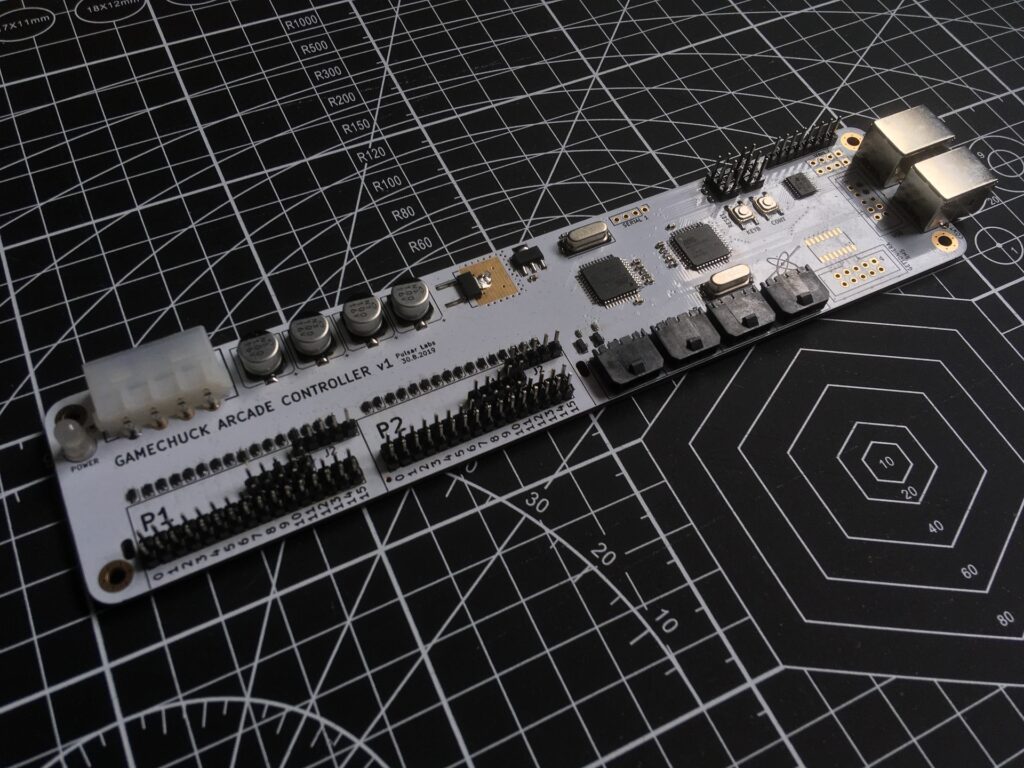
There are several key principles employed in the design and construction of the Gamechuck Arcade. Starting with, “Things should not break easily”. That is why there’s 22mm (0.87″) of fibre board between the outside world and any of the interior components.
It’s also why there’s 6mm of laminated glass before you can reach the delicate 120Hz screen inside, and why the only effect from accidentally spilling beer on the controls would be a dirty look from the bartender.
Next one is, “If they do break, it should be easily replaced”. The benefit of standardized sizing in computer components, enables us to use off-the-shelf parts for the machine running the show. This means that they can be either easily swapped out if they end up being faulty, or even upgraded somewhere down the line.
Pulsar Labs created an awesome PCB For controlling the joysticks, the buttons, the light rings around the buttons, and the marquee lighting. So far as we’ve researched, it seems to be more comprehensive than anything else on the market right now. More importantly for us though, it has a chip that’s not hiding under a wad of plastic goop. It also enables us to have effects on the light rings that will respond to the game.
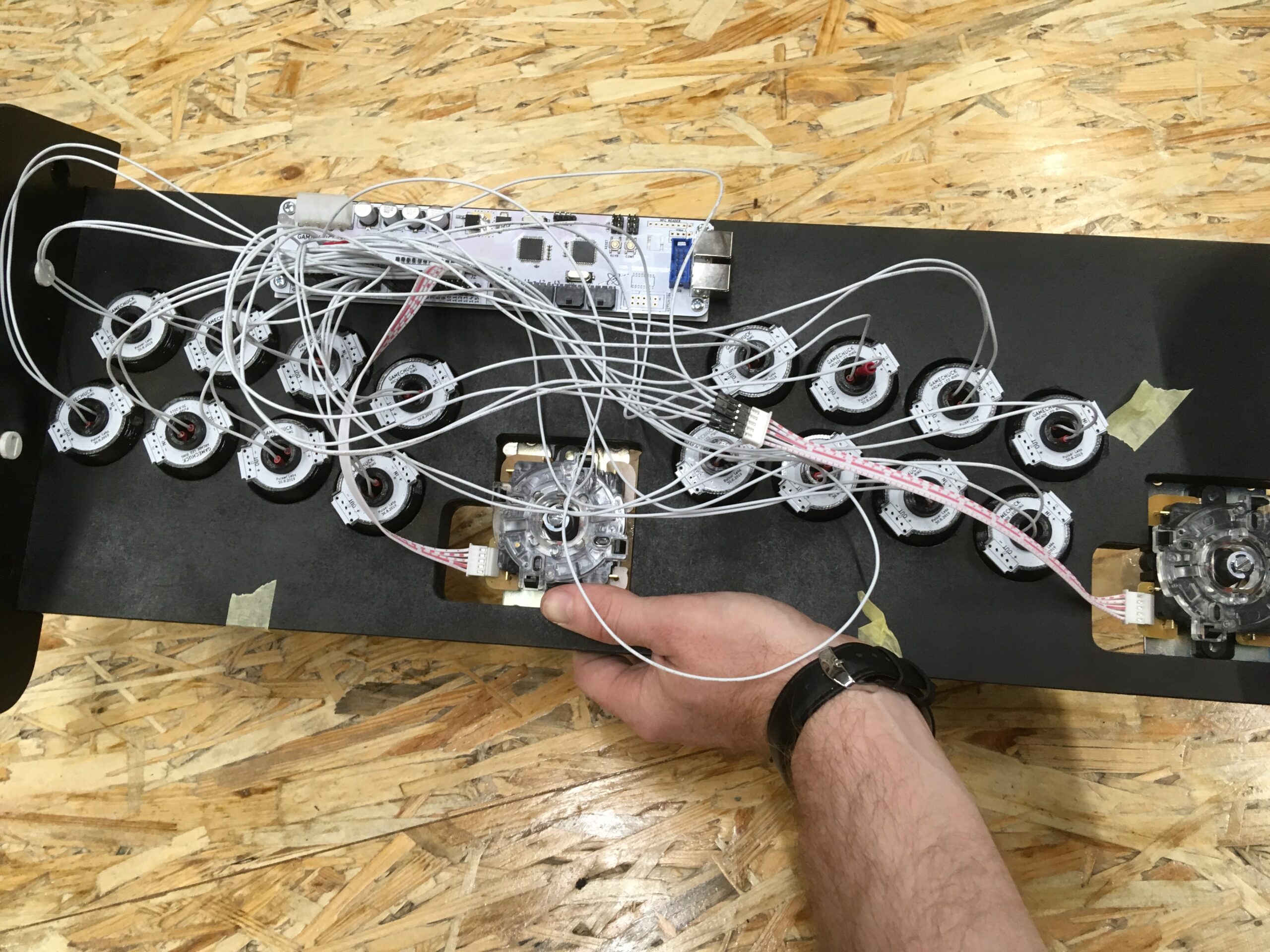
The entire control surface is removable, so that we could accommodate single, dual or up to four player configurations, light guns, or things we couldn’t think of or need, yet.
“It should be easy to use.” It doesn’t need any other peripheral, or app to get it going, and the most you should have to do is select the menu (and consequentially game) language, and your Wi-Fi password, should you choose to connect it online.
There’s no always-online requirement here, but we are planning to be able to both update the software and add games to the library. You would of course, no longer be only competing against your pub friends, since if you’re online we’d be able to give you both the local and the global leader boards for any of the games.
Eventually, we’d like to have multiplayer games which you could play with other Gamechuck Arcades.
No quarter(s)!
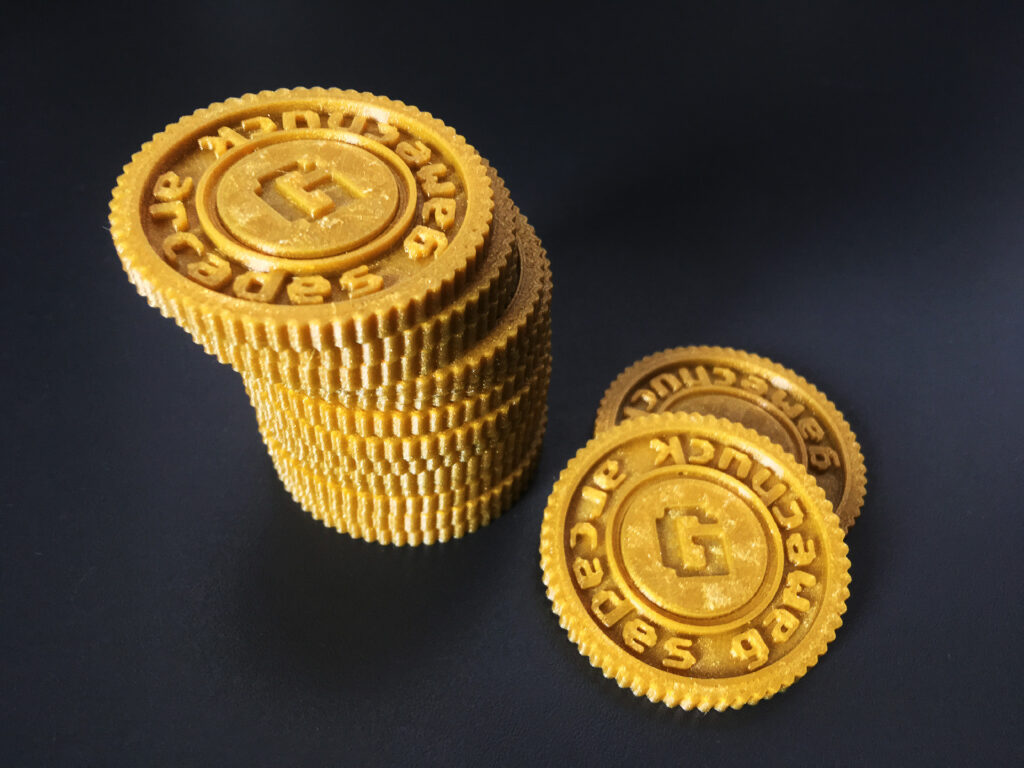
The Gamechuck Arcade, as a system, is fully compatible with a coin acceptor. Mostly because it was one of the first things we developed. But more appropriately, it features an NFC reader integrated into the control surface.
Through this, at the most basic level, we can enable cashless payment. On the more fun side though, we can create interaction between the arcade and our 3D printed NFC coins.
These can be customized to the establishment using the arcade for for gamification of their services, such as offering gameplay features in exchange for beer, for example. Or vice versa, offering a beer to someone who records their leader board score with their coin.
Nothing Without the Games

From its modest beginnings as a literally hand cut piece of 6mm (.23″) fibreboard, the arcade was always accompanied by Speed Limit. The first three-day prototype, the all-proto-stages, and the final product demo version all came out with respective arcade hardware.
It’s only natural then that Speed Limit, out from February 16th, 2021, on all consoles (but the Gamechuck Arcade) is set to be the flagship game.
Speed Limit is an unapologetically difficult game, and when you play it, you will realize why we build the arcade so sturdy.
The arcade library will be further expanded with Gamechuck games, but as it grows, we’d also like to welcome other developers to the platform.
Recognition
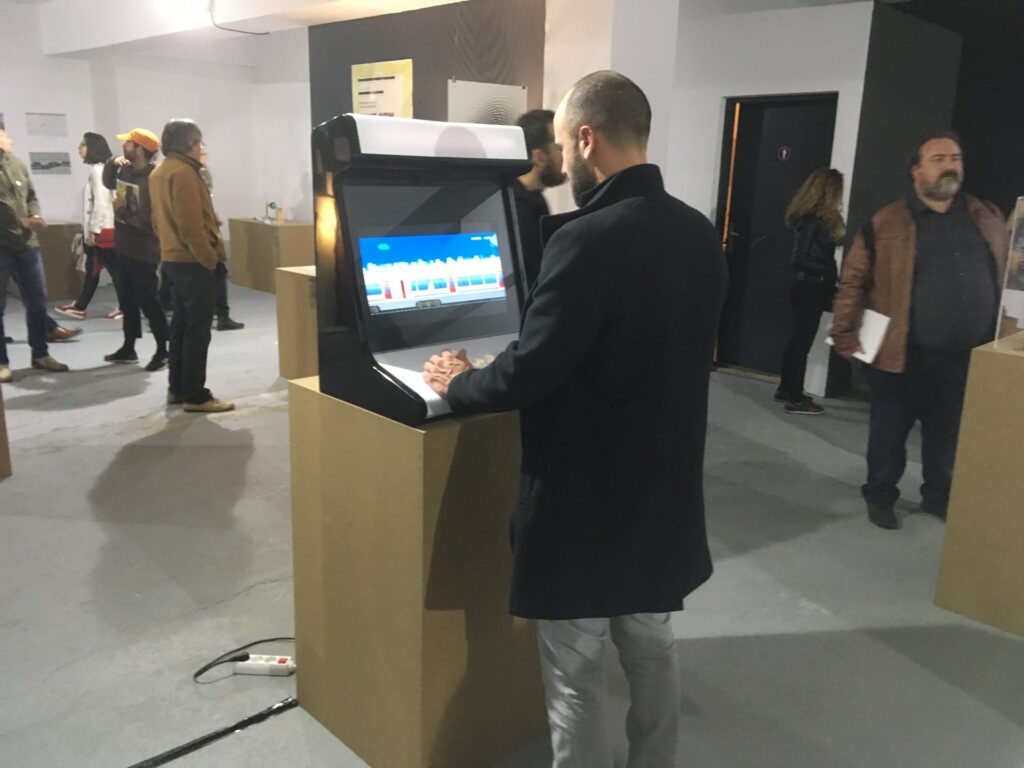
Even prior to the pandemic, dealing with transport logistics would have been something we’d tackle at the end. However, due to the rather physically massive nature of the product, we didn’t invest into advertising it much globally.
Despite that, it’s already received an innovation award by a local electronics magazine, was featured as a finalist at the Zagreb design fair, and a prototype was even given real world treatment for several months at a local gaming bar, Crni Mačak (The Black Cat) in the pre-viral times.
Where do we go, from here?
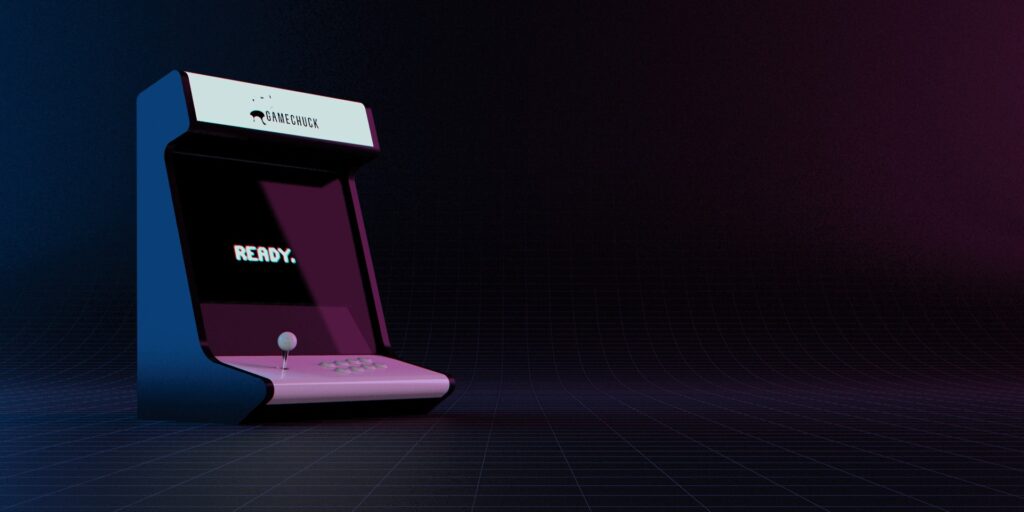
In order to not just revive the arcades, but give them a fighting chance, I think there is a clear need to acknowledge the past, but not ignore all the things we’ve developed in the meantime.
If we accept that times have changed, and that that’s fine, we can more easily embrace all the advancements, in design, technology and even manufacturing, in order to nurture the arcadecraft for the next generation.
Ultimately, all the technology and research that’s been poured into making the Gamechuck Arcade, is nothing without people playing it.
Its heart might be silicon, but its soul is those of its users. Multiplayer might be available for nearly every retro machine currently available on the market, but playing together, in public, with or against someone standing next to you, was a relatively rare experience even prior to the grand calamity that was 2020.
[This content has been reposted from Speed Limit blog. You can check out Speed Limit (and try the demo!) at its Steam page.]







very nice, i've been hinting myself to make a raspbwerry pi 0 controller.. out of all arduinos out there. like the cover materal(white) ,. cool circuit board PCB. nice, on the coins upgrade, add bitcoin yet?.. theres some reddit for vending mnachines doing bit.
tring out new vulkan drivers and coding for bcm & armv7 android .. i want to stream portal CrimeWars into a rpi0 contyroller.. c how it go..